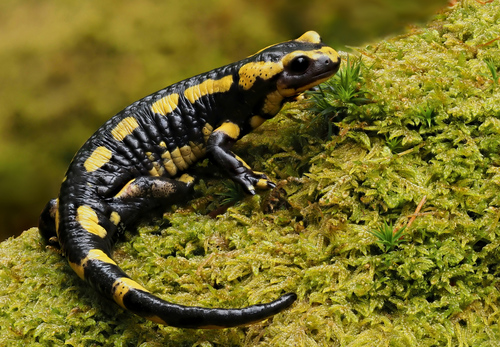
Fire Salamander
The boldly colored fire salamander dazzles European forests with its black and yellow pattern. A nocturnal insectivore, it showcases remarkable resilience through toxin secretion and limb regeneration, enhancing its mystique in the ecosystem.
10-20 years
Lifespan
Vulnerable
Conservation Status
Decreasing
Population Trend
Distribution Range of the Fire Salamander
Salamandra salamandra, commonly known as the fire salamander, is native to central and southern Europe. Its range extends from the Iberian Peninsula in the west, across central Europe, to the Balkans in the southeast, and further into western parts of Russia. Countries where it is commonly found include Spain, Portugal, France, Germany, Austria, Switzerland, Italy, and the Balkans, among others.
Fire Salamander's Habitat
Environmental Conditions
The species predominantly inhabits deciduous and mixed forests. It typically resides in moist environments, such as near streams, ponds, and under dense vegetation. The climate in these areas is usually temperate, with sufficient rainfall providing the necessary humidity. The fire salamander prefers cooler microhabitats and is often found under logs, stones, or within leaf litter.
Ecological Niche
Salamandra salamandra plays an important role as both predator and prey in its ecosystem. It consumes a variety of invertebrates, such as insects, spiders, and worms, helping control their populations. In turn, it serves as prey for larger animals, including birds and mammals. The species is nocturnal, contributing to its niche by being active during the cooler, more humid night times when it forages for food and mates.
Copyright @ Nature Style Limited. All Rights Reserved.
 English
English